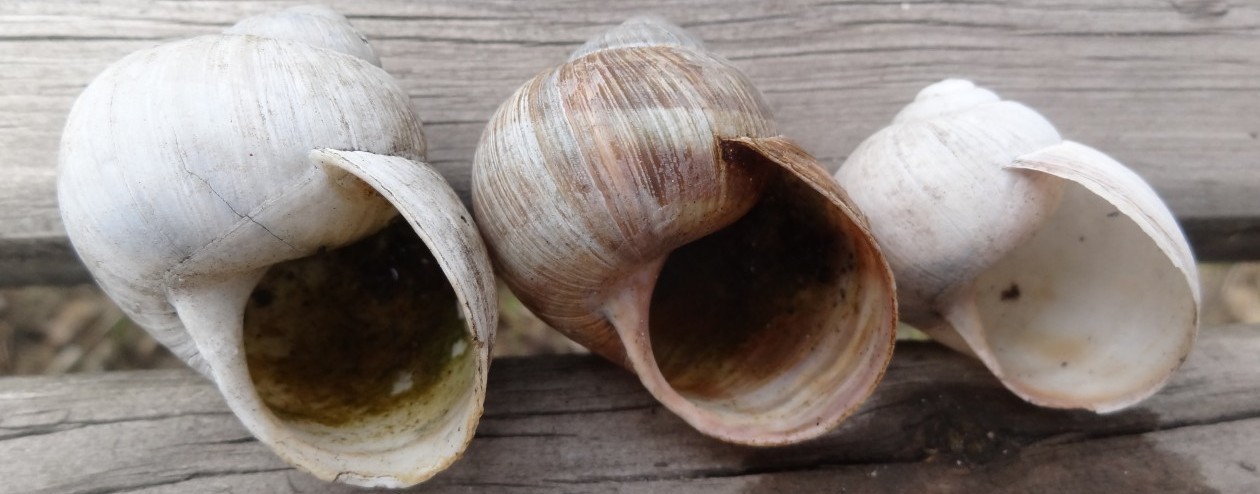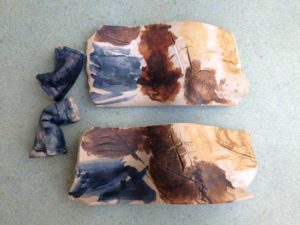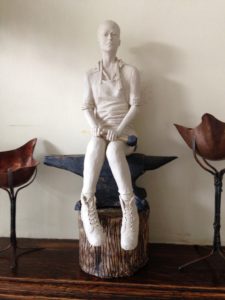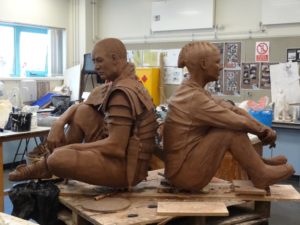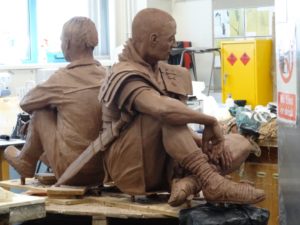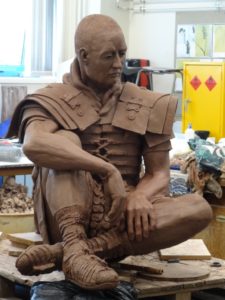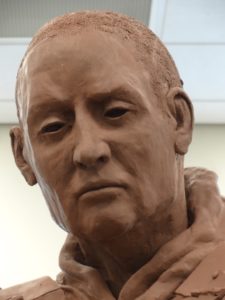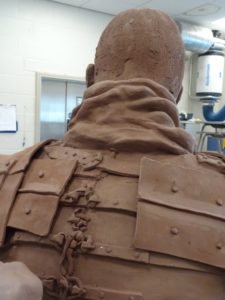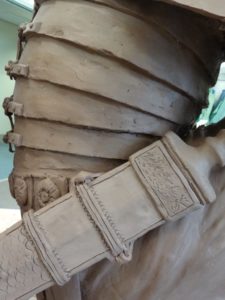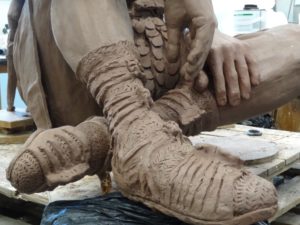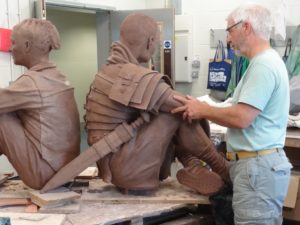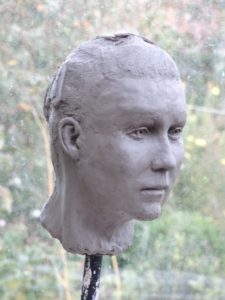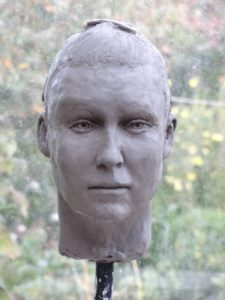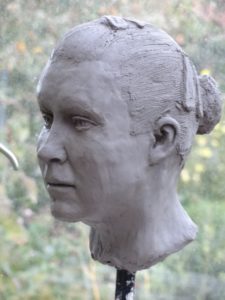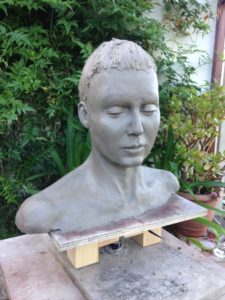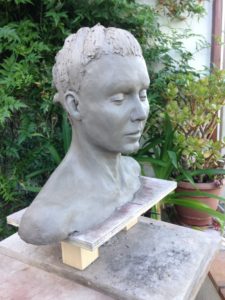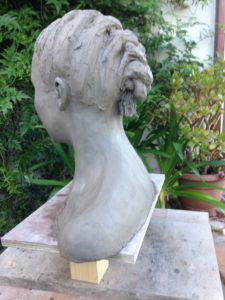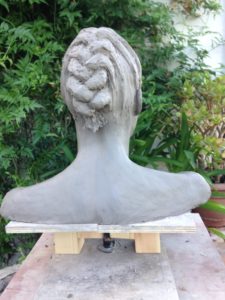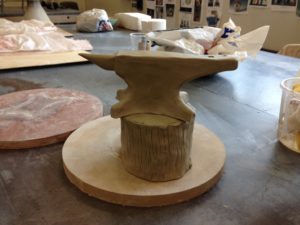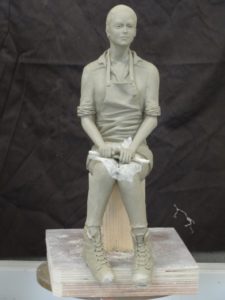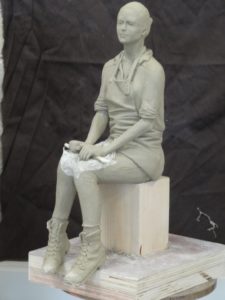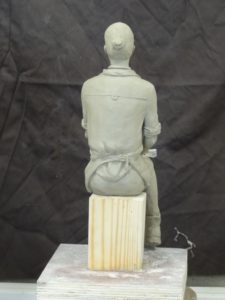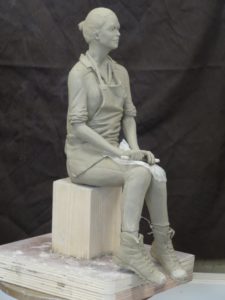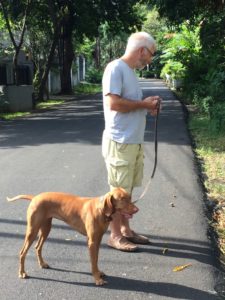I was thinking about Medardo Rosso and his move to photographing his work rather than making more. Here are six photos of a piece of mine; the lighting stayed the same [the piece was only turned] but the pics on the left were shot from less than a metre away and those on the right from two and a bit metres. I tried to keep the centre of the lens on the centre of the piece and cropped very close in the camera to the top and bottom of the subject.

 On the left the bottom of the brick is distorted and the head has an air of “chin up” while on the right he may look little bit grumpy or stern.
On the left the bottom of the brick is distorted and the head has an air of “chin up” while on the right he may look little bit grumpy or stern.

 Again, the brick is distorted, the chin looks tipped up and perhaps looks less stern than the face on the right.
Again, the brick is distorted, the chin looks tipped up and perhaps looks less stern than the face on the right.

 Finally, the picture on the left has a distorted brick and, perhaps, a slightly enquiring look compared to the more solid presence on the right.
Finally, the picture on the left has a distorted brick and, perhaps, a slightly enquiring look compared to the more solid presence on the right.
These differences come about from adjusting distance to subject, diminishing distortion with distance but being closer gives an artificial tip to the head away from the camera and leads one to see things differently. Such differences are difficult to notice for the human eye as we naturally adjust [and our field of view is far greater], but nevertheless closeness to a work alters how you see it [and not just in terms of detail].
Michael Baxandall, in his book “The Limewood Sculptors of Renaissance Germany”, talks about the arc of address and the beam of attention for a sculpture; the arc of address being the angle through which one can see the work and the beam of address being the main axis on which to view the work. Baxandall was considering the works in their chosen environments, niches or altars, etc. in churches, where the vertical distance from the work was set. If one is on the beam of attention, the closer one gets to the work, the less one sees of the forehead and hair. However, I assume that when a worshipper is close to the statue and looking up, they will still hope to see the trappings of holiness [crowns, halos, perhaps a hovering angel too] and hair. But closeness seems to “tip” the head back and features of the upper head visible from further away would not be seen close up – unless the sculptor tipped the head down. Moreover, without tipping, the eyes would be looking afar and the worshipper would have nostrils to look up. If the head is tipped too far down, for better viewing close up, it will not read well from further away. Perhaps, devotional sculptures have the trappings of holiness sitting towards the front of the head [or the depth of head from brow ridge to hairline is subtly reduced]. This matter looks like something to discuss at the upcoming conference in March at the Henry Moore Institute in Leeds on Medieval Sculpture.
Ha! I should have gone back to Baxandall’s book and looked the pictures; problems seems to have been solved by turning the head to the side slightly and down. So, from afar, still see features of side of face and close up chance to look up at face. Another option was keep head facing ahead but lower gaze – often seated Virgin with Jesus on her lap so her gaze passed him onto close worshipper but from afar still see all of face.














